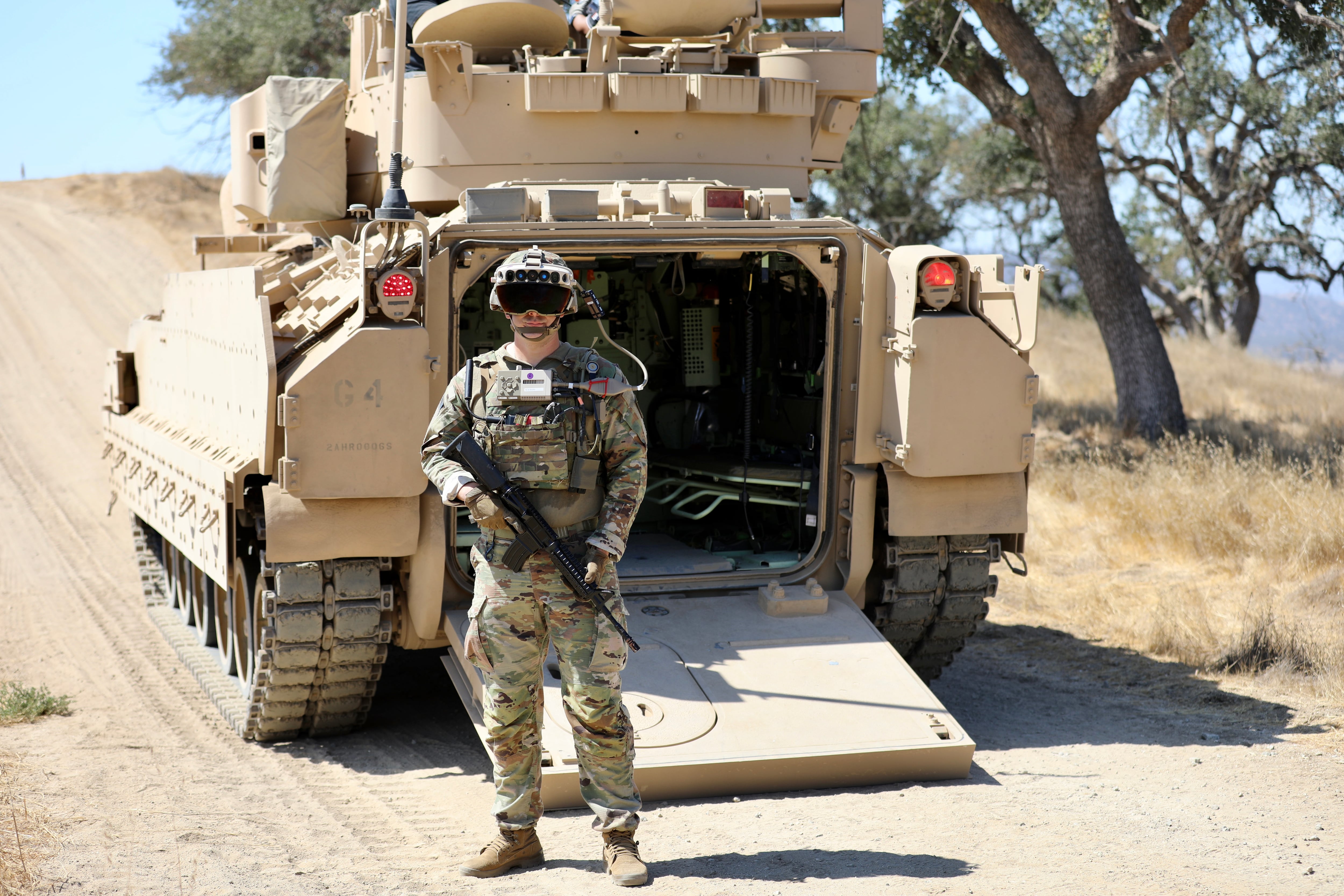The Army’s upcoming “do-it-all” goggle could turn soldiers in the back of fighting vehicles from passive passengers to plugged-in fighters.
Soldiers with the 1st Armored Brigade Combat Team, 3rd Infantry Division, out of Fort Stewart, Georgia, traveled to Camp Roberts, California, to match test the Integrated Visual Augmentation System, or IVAS, inside and outside of the Bradley Fighting Vehicle.
The IVAS has been under development in recent years and has been hailed as the next “game-changing” tech for the dismounted soldier. The device is based off of the Microsoft HoloLens augmented reality goggle.
RELATED
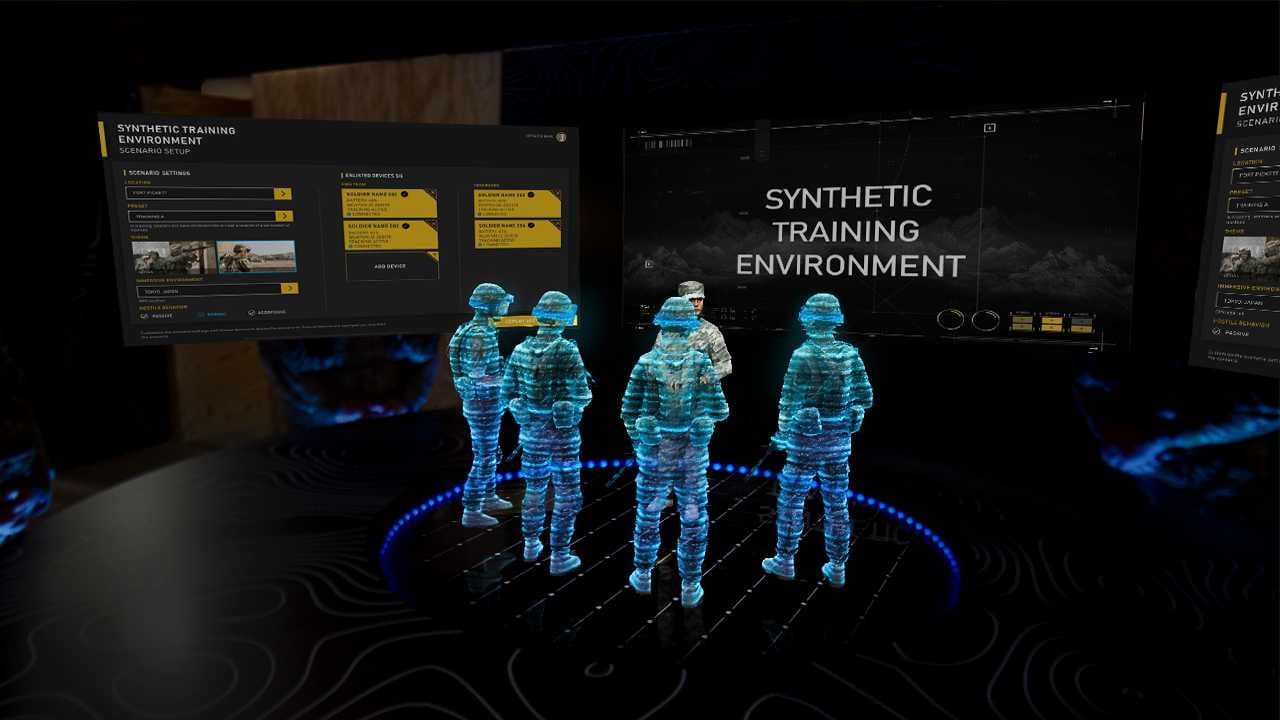
A ruggedized military prototype has undergone a host of tests. Some moisture issues and field-of-view distortion has added another round of testing, expected to conclude in early 2022, with a fielding date set for late 2022.
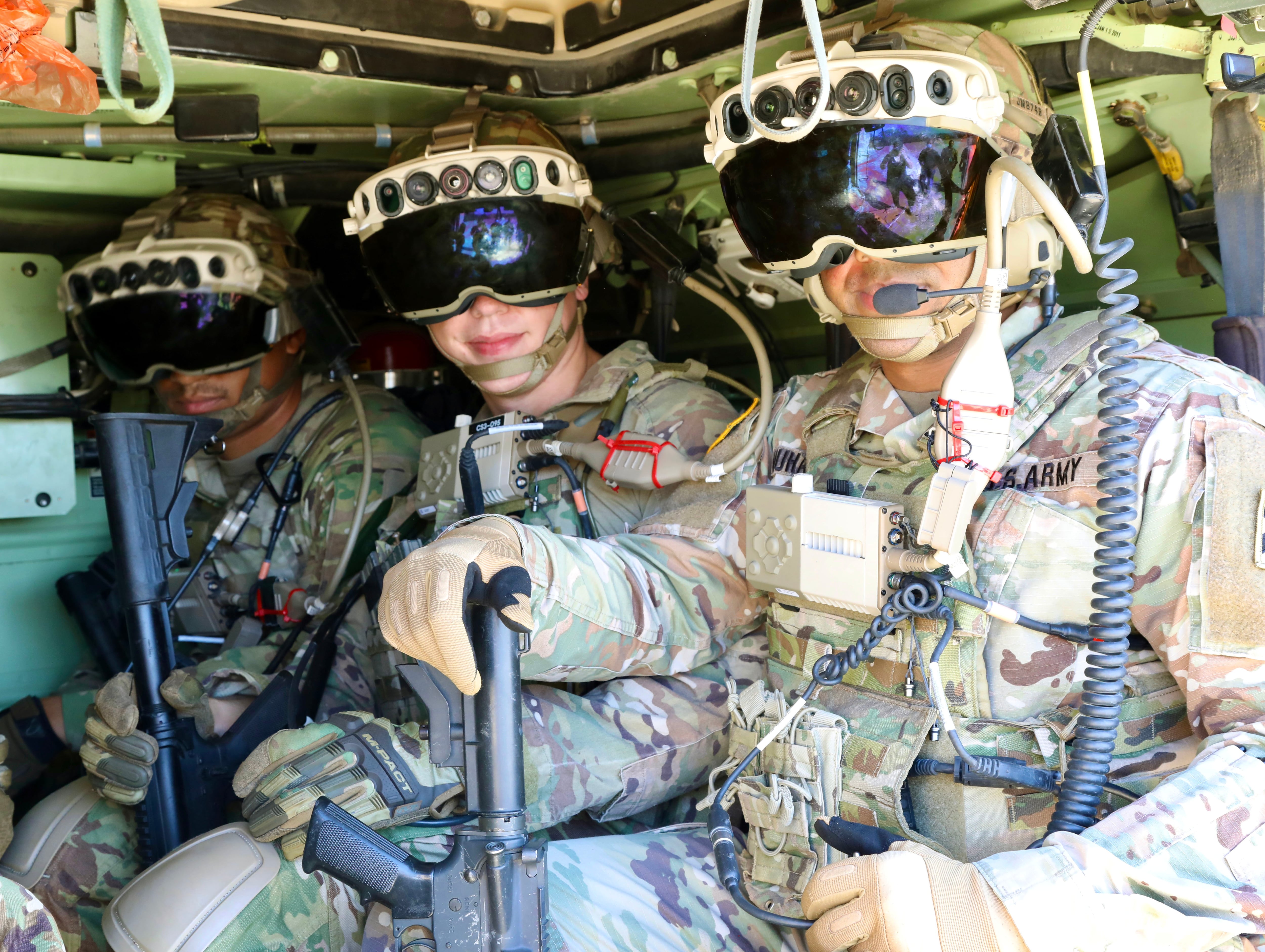
The goggle overlays navigational aids, markers, target acquisition and a host of other data, essentially giving grunts the tech that fighter pilots have long had in their helmets.
One promise of the device is to allow it to wirelessly plug into a vehicle system such as the Bradley. The device would allow soldier data to be uploaded into a shared cloud at the company level and above.
But while in the vehicle, the goggle, for the first time, would let the now mounted soldiers see what the driver and gunner see from their perches.
The key to the tech is two-fold, according to Army Maj. Shawn Jones, who is involved with the IVAS project: first, soldiers don’t lose situational awareness; second, those same dismounted soldiers can use on-board vehicle sensors to see what the vehicle sees.
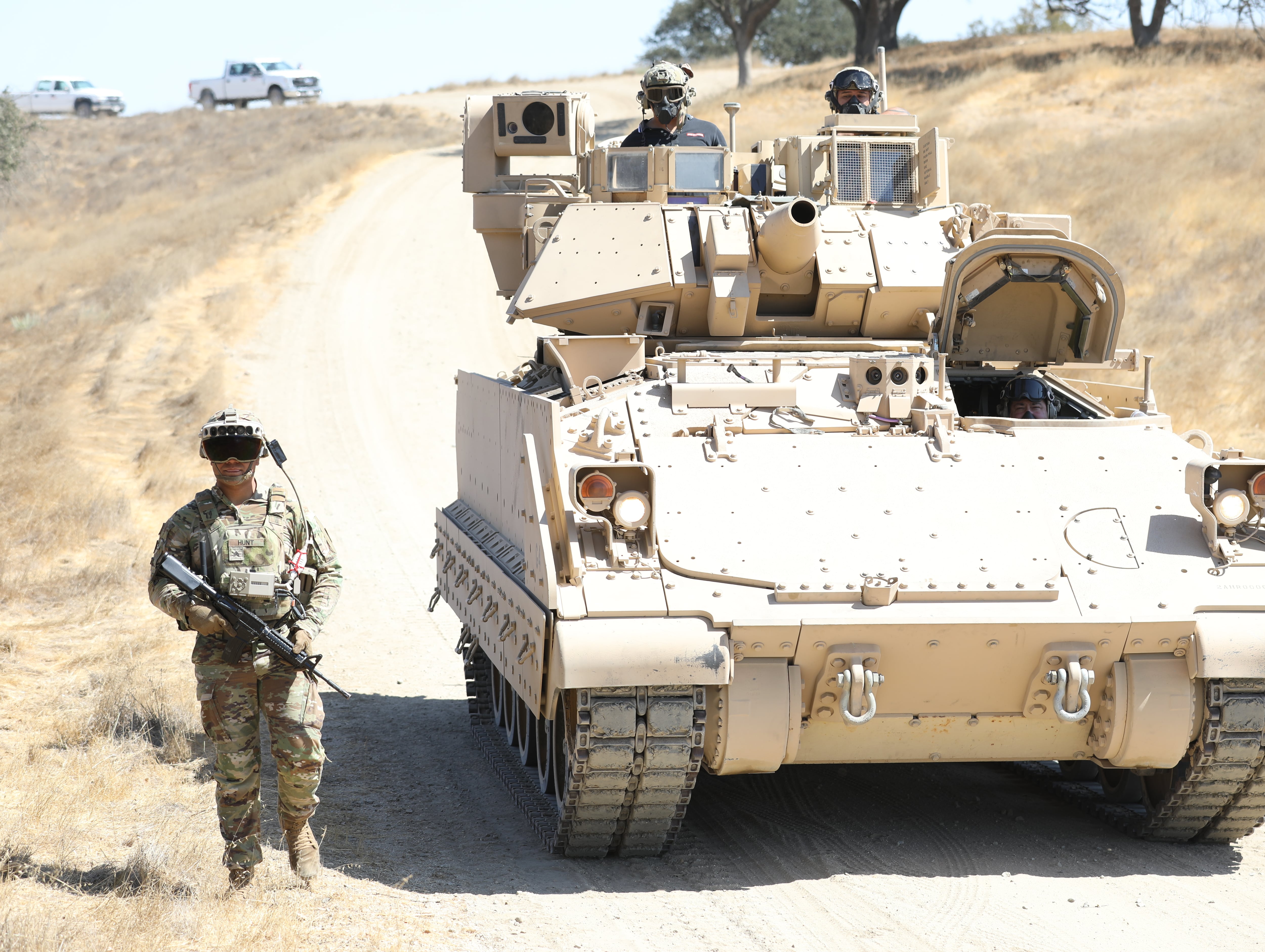
“The IVAS augmented reality system integrates communications, thermals, and night vision to enhance our situational awareness and lethality from within the Bradley,” said Pfc. Benjamin Franke. “It allows everyone to see what the driver, commander, and gunner are seeing outside, which gets more eyes-on and increases situational awareness immediately for when we dismount.”
Some of the exercises that soldiers did at Camp Roberts included helping the vehicle crew scan for improvised explosive devices, Franke added.
Simple things, such as sitting a little taller, can add a lot of awareness for soldiers. Sgt. 1st Class Darrell Borgic noted that the taller height of the Bradley alone gives soldiers a better line-of-sight across the battlespace.
Don Aldea, lead engineer for IVAS integration, laid out what the goggle can do with the vehicle, in the release.
There are three main options, he said: SEE, World View and power up.
Power up is what it sounds like. Soldiers can recharge their equipment while inside the vehicle and on-the-move. The hope is that the power up option will reduce the need for additional batteries to power devices in the field.
SEE is a program that clones feeds from three vehicle sensors: the front Drivers Vision Enhancer, the driver’s Commander’s Independent Viewer and the gunner’s Improved Bradley Acquisition Subsystem. Inside the soldier’s heads up display they’ll have a variety of views to see what’s going on outside the vehicle.
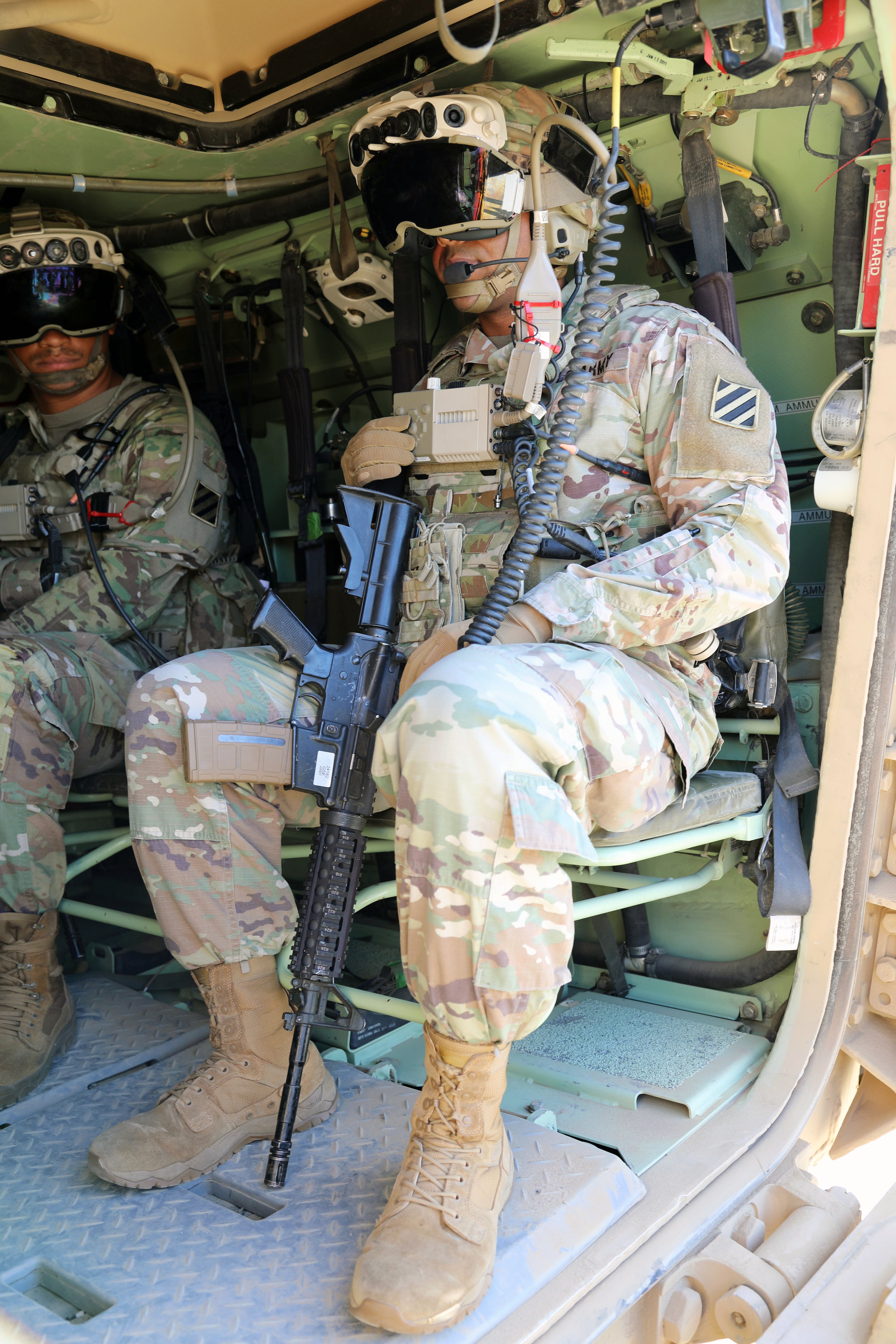
World View shows the other platforms and units on the network. That way soldiers can know where the friendlies are.
“When soldiers come up to a position where they are getting ready to deploy outside of the vehicle - as of today they are going in mostly dark and blind,” Aldea explained. “With this integrated technology, they can get map, mission, and intel updates enroute. They can see what is around them to strategically position the Bradley and then drop the ramp where they are not in direct fire and execute immediately.”
Oh, and of course, they’ll have access to drone feeds from above.
Dr. Navin Mathur, lead engineer for IVAS platform integration, said this tool will give soldiers better decision making as they exit the vehicle and enter the dismounted portion of their mission.
“There are no longer gaps in information between mounting, transit, and dismounting, which will increase the survivability and lethality for both the platform and the soldiers,” Mathur said.
The platform integration work continues with plans for a user study on IVAS and the Stryker in August.
Todd South has written about crime, courts, government and the military for multiple publications since 2004 and was named a 2014 Pulitzer finalist for a co-written project on witness intimidation. Todd is a Marine veteran of the Iraq War.
